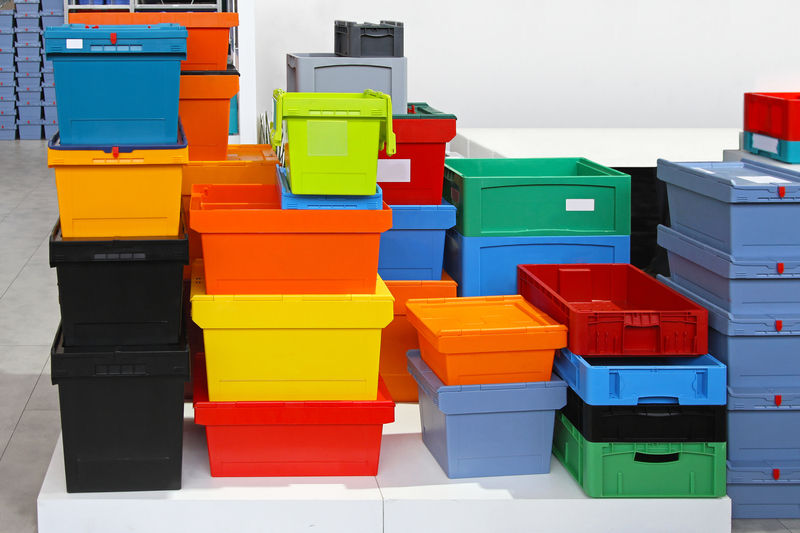Longevity Tips: Safely Store Your Sofa Like a Pro
Posted on 17/05/2025
Longevity Tips: Safely Store Your Sofa Like a Pro
Have you ever wondered the right way to store a sofa for a move, renovation, or to make space for new furniture? Whether you're downsizing, temporarily relocating, or simply preserving a beloved piece for future use, knowing how to store your sofa safely is essential. In this comprehensive guide, you'll learn the best longevity tips for sofa storage, ensuring your couch remains pristine for years. This expert advice is perfect for homeowners, renters, interior design enthusiasts, and anyone needing to safely stash their sofa like a pro.

Why Proper Sofa Storage Matters
Before diving into expert techniques, let's underscore the importance of proper sofa storage:
- Preserves Condition: Storing your couch correctly prevents physical damage, mold, mildew, fading, and insect infestations.
- Saves Money: Protecting your furniture extends its lifespan, saving you from costly repairs or replacements.
- Retains Value: If your sofa is an heirloom or investment piece, proper storage maintains its value over time.
- Simplifies Moving: Proper preparation ensures your furniture arrives at your new place in perfect shape.
A neglected or improperly stored sofa can quickly lose its charm and utility. With these longevity tips, you'll guarantee your sofa is ready for many more years of comfort.
Steps to Safely Store Your Sofa Like a Pro
1. Clean Your Sofa Thoroughly
Never store a dirty couch. Dirt, dust, and crumbs can attract pests and foster mold and mildew. Prepare your sofa for storage by:
- Vacuuming: Use a vacuum cleaner with an upholstery attachment to remove surface dust, pet hair, and debris from all crevices.
- Spot Cleaning: For stains, use a fabric-appropriate cleaner according to the manufacturer's instructions. Leather sofas require specialized leather cleaners and conditioners.
- Deodorizing: Sprinkle baking soda on fabric sofas, let sit for 20 minutes, then vacuum. For leather, use gentle wipes and let the piece air out.
Let your sofa dry completely before proceeding. Moisture is the enemy of safe furniture storage.
2. Disassemble When Possible
If your sofa comes apart, disassemble it to make storage and transport easier. Remove legs, detachable arms, pillows, and cushions. Store hardware in a labeled plastic bag taped to the frame, so you won't lose any pieces when reassembling.
3. Protect Your Sofa from All Angles
Use high-quality sofa storage protection materials:
- Furniture Covers: Invest in both plastic wrap and breathable fabric covers. Wrap the sofa in moving blankets or soft cotton sheets first, then finish with plastic to protect against dust and moisture.
- Avoid Direct Plastic Contact: Never wrap leather or fabric sofas in plastic alone! Trapped moisture leads to mold and mildew, ruining your upholstery. Always use a breathable layer first.
- Cushions and Pillows: Store them separately in cotton bags or pillowcases to allow air circulation and prevent odor buildup.
4. Choose the Right Storage Environment
One of the most important longevity tips for storing sofas is picking a safe, dry location. Consider:
- Climate-Controlled Storage Units: Moisture control and constant temperatures protect fabric, leather, and wood from warping, shrinking, or cracking.
- Avoid Attics, Basements, and Garages: These locations are susceptible to wild temperature swings, excessive humidity, and pests.
- Clean, Level Floors: Your couch should sit on pallets or a tarp to prevent direct contact with concrete floors, which can transfer moisture and cold.
Tip: Elevate your sofa with pallets to increase airflow and minimize risk of water damage.
5. Position the Sofa Correctly During Storage
Proper positioning is crucial for safe sofa storage. Here's how to do it smartly:
- Keep It Upright: Never store your sofa on its sides or back. Upright positioning prevents distortion of the frame and cushions.
- Leave Room Around: Allow at least a few inches between your sofa and walls or other items for airflow and to prevent accidental scuffs.
Avoid stacking heavy objects on your stored sofa. This deforms the cushions and weakens support.
6. Check On Your Sofa Regularly
- Visit the storage site every few months to ensure your sofa remains in good condition.
- Look for: Signs of moisture, pest infestation, or fabric distress.
- Airing Out: If possible, uncover the sofa briefly to let it breathe.
Additional Longevity Tips for Sofa Storage
Apply a Fabric or Leather Protector
Before storing, coat your sofa with a suitable protector. Fabric sofas benefit from a spray-on fabric protector that guards against moisture and stains. Leather sofas should be treated with a leather conditioner to prevent drying and cracking.
Use Desiccants for Moisture Prevention
Silica gel packs or moisture absorbers placed near--but not directly on--your sofa can help control humidity and prevent mold growth in long-term storage.
Pest-Proof Your Storage Area
- Check for signs of rodents or insects before moving your sofa in.
- Consider natural repellents, such as cedar blocks or lavender sachets, inside the storage unit for extra protection.
Document Your Sofa's Condition
- Take detailed photos from all angles before storing. This helps you track any changes and serves as insurance documentation if needed.
- Make notes of any existing scratches or stains.
Plan for Easy Retrieval
Organize the storage space so that your sofa isn't buried behind heavy items. Leave a clear path, so you don't risk damaging your couch when you need to bring it out.
Sofa Storage Mistakes to Avoid
Even with the best intentions, furniture owners can make crucial mistakes when storing a sofa. Here's what not to do:
- Storing When Wet: Even a slightly damp sofa is a breeding ground for mold and mildew. Always ensure it's totally dry before storage.
- Skipping the Cover: Exposing your sofa to dust, light, and pests will speed up deterioration.
- Piling Up Items: Using a stored sofa as extra shelving will squash cushions and damage the structure.
- Storing Directly on Concrete: Moisture seeps up from concrete, damaging fabric, wood, and leather.
- Neglecting Regular Checks: Months of neglect can turn a minor problem into a disaster.
How Long Can You Store a Sofa?
Many people wonder about the ideal duration for safe sofa storage. If you follow these longevity tips--choosing a climate-controlled space, prepping with covers, and checking periodically--your sofa can be safely stored for several months to years. However, longer storage demands more vigilance. Always plan for annual checkups and consider reconditioning (cleaning, applying fresh protectant) at least once a year.
Special Sofa Storage Considerations
Storing Leather Sofas
- Always apply conditioner before storage.
- Keep away from heat sources that may cause drying or cracking.
- Use breathable covers only.
Storing Vintage or Antique Sofas
- Consult a furniture restoration expert for special protection techniques.
- Use acid-free paper and padding to protect intricate woodwork and fabrics.
Storing Sectional Sofas
Disassemble completely, label each piece, and wrap sections individually. Store hardware in clearly marked containers to prevent loss.

Frequently Asked Questions
Can I store my sofa in a non-climate-controlled unit?
It's not recommended for long-term storage or expensive/antique sofas. The risk of mold, warping, and pest infestation is much higher. For short periods (less than a month) in mild climates, you may manage, but take extra precautions with covers and moisture control.
How do I prevent mold and mildew?
Start with a completely dry, clean sofa. Use moisture absorbers, climate-controlled storage, and proper ventilation to drastically reduce mold risk.
What's the best way to move a sofa into storage?
- Lifting: Don't drag - lift carefully by the frame, not arms or cushions, to avoid weakening joints.
- Transport: Use a truck or van with enough space to keep the sofa upright and secure.
- Loading: Protect from bumps with blankets and padding during transit.
Conclusion: Invest in Your Couch's Future
Storing your sofa like a pro is about more than just clearing space--it's about protecting one of your home's most valuable comfort investments. By following these professional sofa storage tips, you can ensure your favorite couch is ready for use anytime, looking and feeling as good as when you stored it.
- Clean and prep like a pro before storage
- Pick the right environment
- Use proper covers and supports
- Avoid common storage mistakes
- Stay vigilant with periodic checkups
With these longevity tips for sofa storage, you'll extend the life of your sofa and get the maximum value out of your investment. Trust these expert strategies to store your couch safely--your future self (and living room) will thank you!




